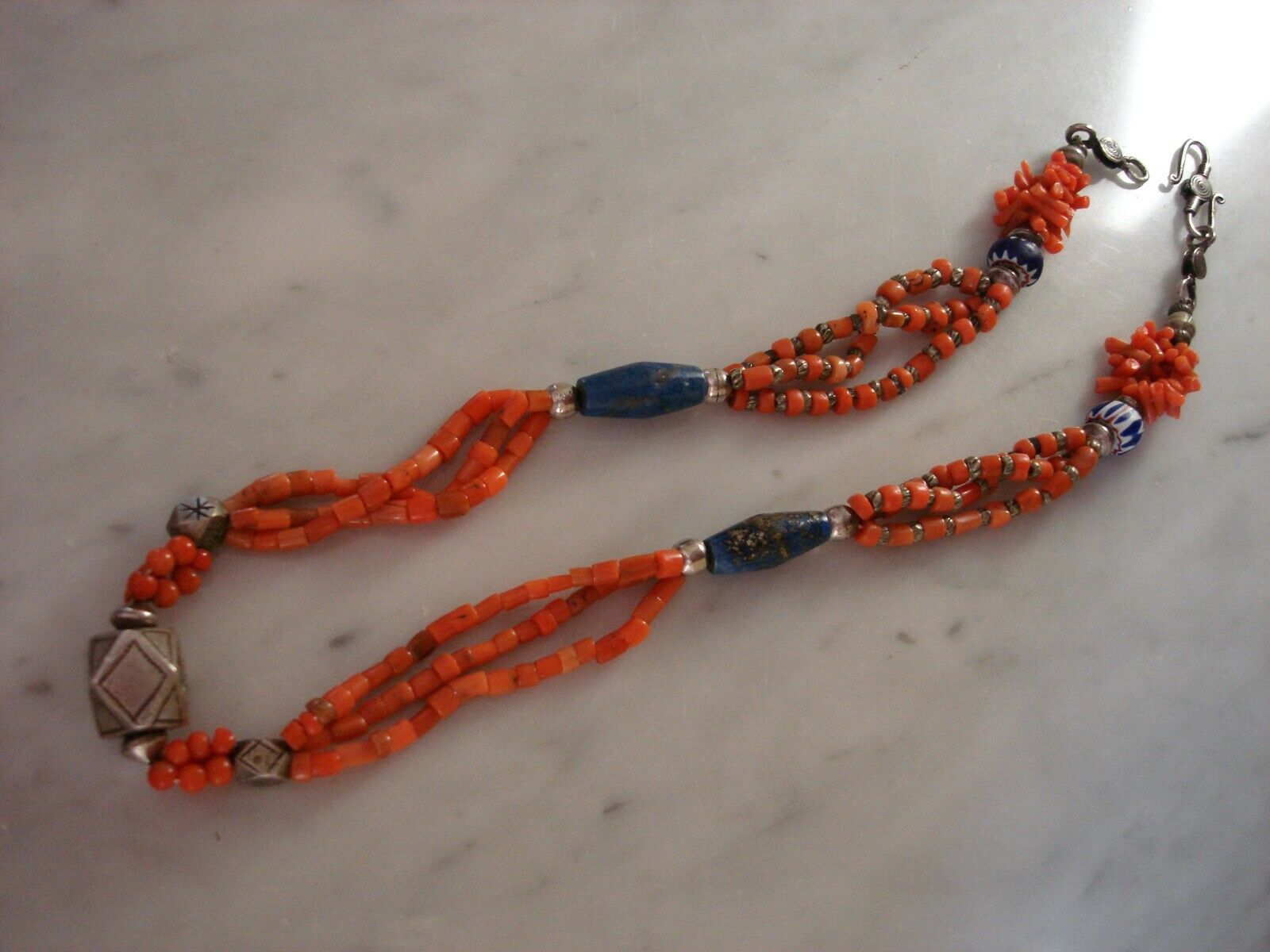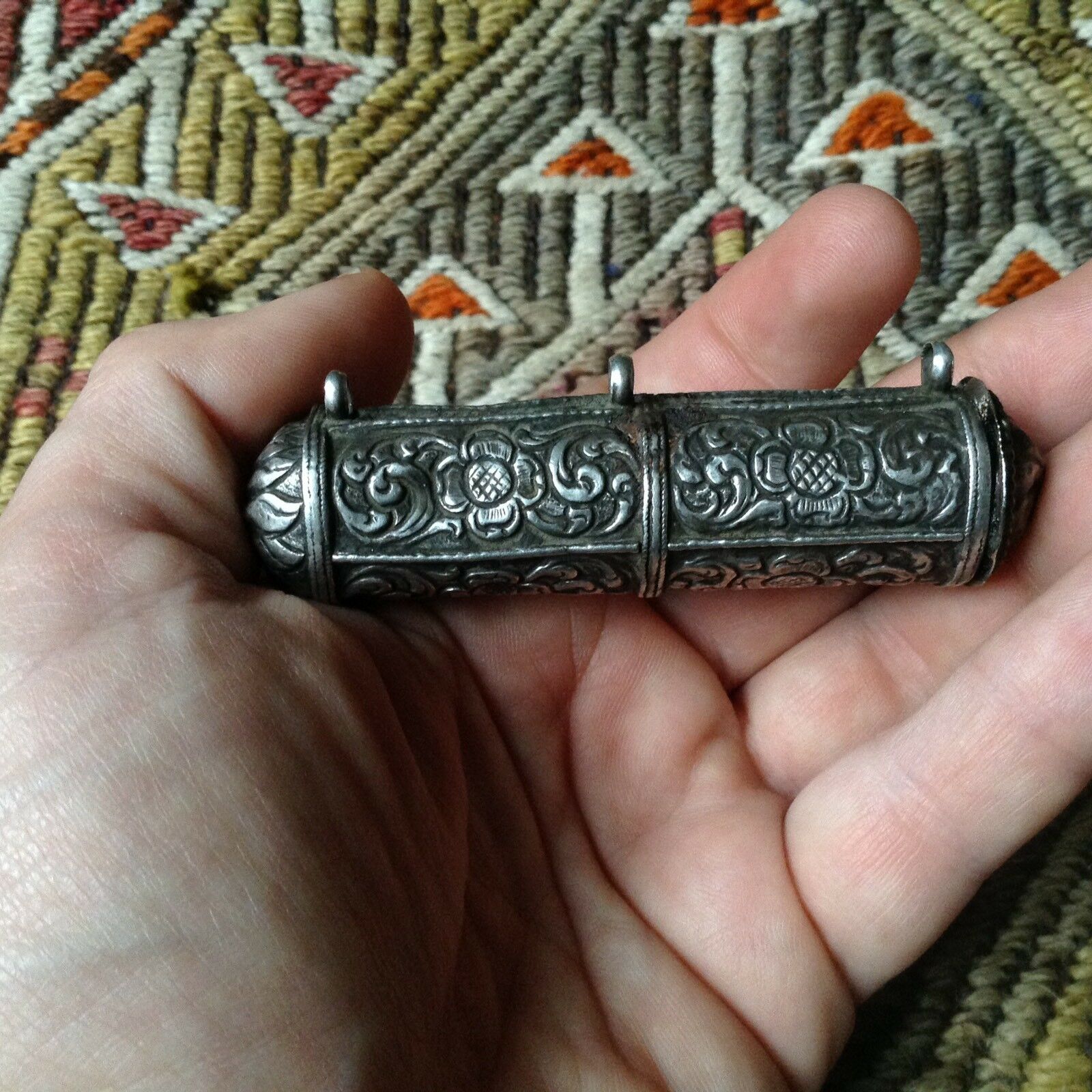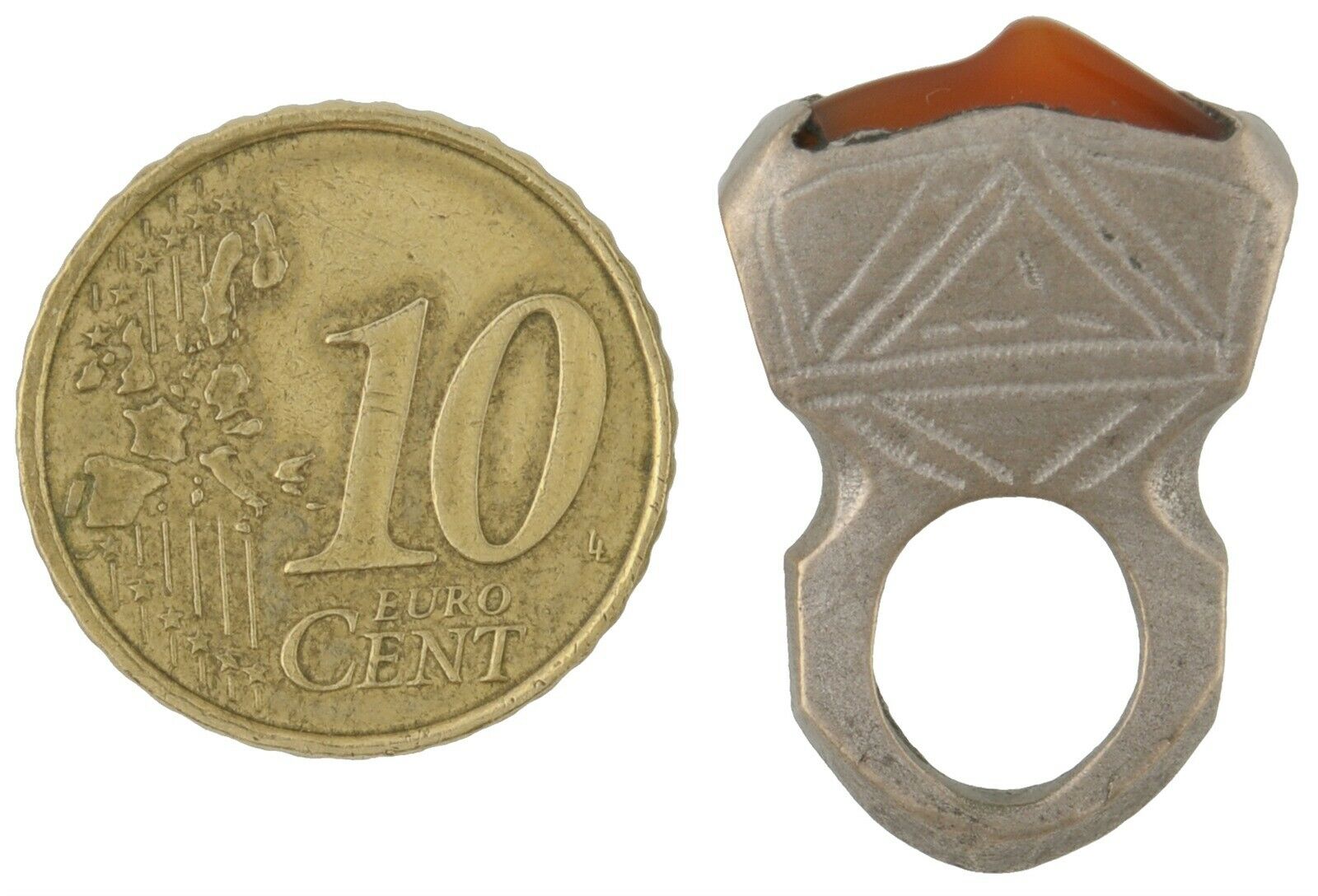-40%
Berber Fibulae & old orange coral Hammered silver Rolo Moroccan Tuareg necklace.
$ 168.43
- Description
- Size Guide
Description
Berber Fibulae with old orange coral charms and silver link chain Moroccan Tuareg handmade adjustable necklace.Shipped with 3 day USPS First Class.
Berber Fibulae with old orange coral charms and silver link chain Moroccan Tuareg handmade adjustable necklace.
Beautiful handmade Berber necklace with old orange coral beads and a vintage fibula pendant.
This is a an antique silver textured belcher Rolo hammered chain 8mm x 5mm links. The chain is made of a brass base with an antique silver electroplating and clear coating. It’s lead, nickel and cadmium free.
The center focal fibulae pendant came from the Atlas Mountains of Morocco and was crafted by local artisans. It measures 2” in height by 1” in width plus 1” of the orange coral dangle charms.
The fibulae is beautifully carved with intricate tribal designs and has a red glass center stone.
There are 12 old vintage supply of orange coral beads ( approximately 12mm x 14mm ) hanging from the chain with 6mm antique silver beads.
The charms dangling from the fibulae have 15 small orange coral 4mm beads.
The length of the chain is 21” plus an extension oval antique chain of 3.5”
This can be adjusted up to 24.5” and Down to any size.
There is a large old hook clasp closure.
This is a unique and special find.
A Morrocan Fibula is an item of jewelry that was commonly worn by Morrocan women as an everyday adornment while going about daily work as well as on special occasions. It is essentially a cloak fastener, comprising an ornate metal triangular, round or oval shape with detailed etchings in filigree or enamel, and a pin which serves to fasten two layers of material together. They were usually worn as a pair. Tribal women often wore (and sometimes still do) a simple piece of material or two pieces of material draped across their bodies and tied with a belt. The fibula negated the need to cut the material or to sew it; the clothing could simply be fastened by the use of the pin or pins to attach the material together. At the same time, the fibula served as a decorative item. If it was made in an inverted triangular shape, this represented the female form and fertility. Often attached to the fibula by means of a chain was a Tagmoute and also a number of silver coins. The weight, size, detail and workmanship of the fibula worn indicated the social standing of the wearer. Each region or tribe in Morocco had its own distinctive style of fibula, but each pair was unique.
Coral has been called the ‘garden of the sea’. It was once believed to be a plant, but is now known to actually contain living animals called polyps. Coral is the result of accumulated skeletal masses from these polyps. Red is considered the most sought after color but coral also can be found in pink, white, yellow and black.
Records dating back thousands of years confirm that coral was used in decorative art objects. It was believed to prevent ill fortune and offer protection from skin disease when worn as a necklace. Dreams about coral are believed to foretell recovery from a long illness. Ancients believed that Mars was composed of red coral.
Coral symbolizes life and blood force energy. Dark red coral is used for heating and stimulating the bloodstream. Pink shades restore harmony to the heart. It is used as an aid to depression, lethargy or deficient nutrition.
Locations where coral can be found include the Mediterranean Sea, off the coast of Australia, the South Pacific, the waters of Japan, and Africa.




















